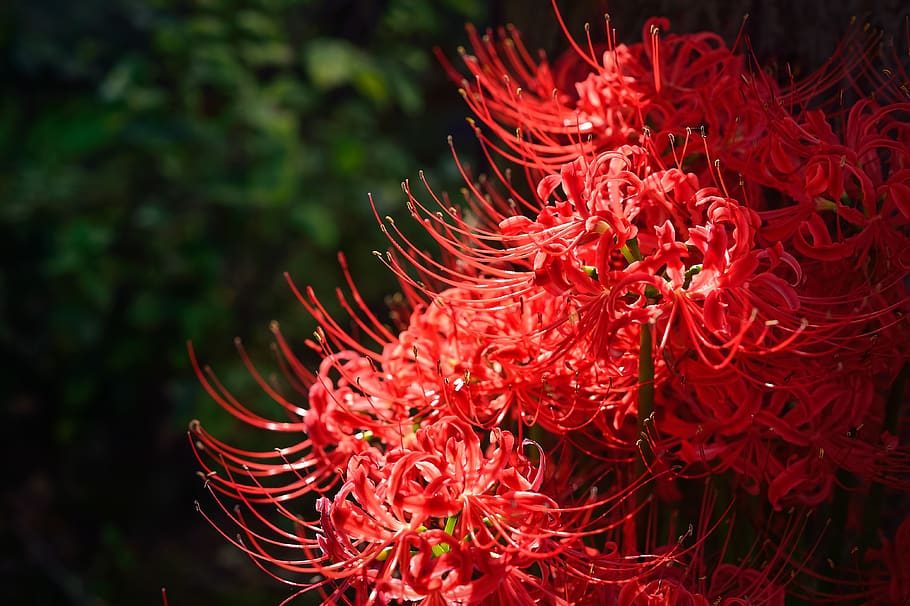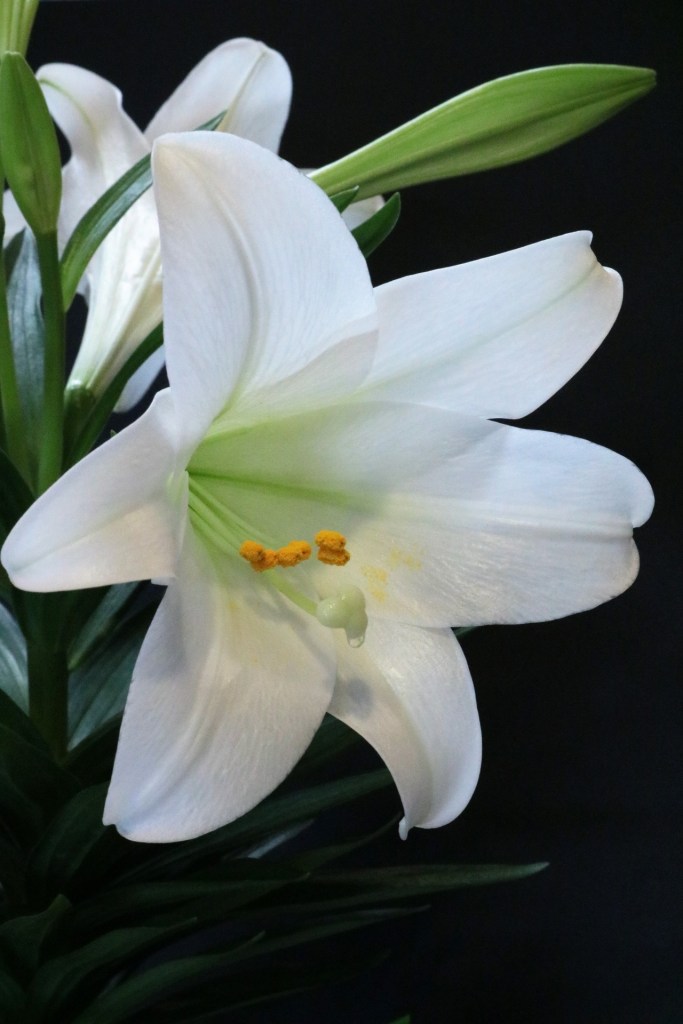For me, one of the small joys of autumn is the sudden emergence of the beautiful red flowers, known in my part of the country as “spider lilies.” Recently I learned that these flowers are actually an invasive species that originated in South Eastern Asia. This gorgeous red weed eventually made its way to the islands of Japan and from there it found its way over to the United States and my own back yard. That’s quite a trip for what seems to be such a delicate flower.

These flowers have an almost magical quality to them, in that they seem to appear fully grown and blooming out of nowhere after heavy rainstorms in late summer and early autumn. You know that the fall season is upon you when you wake up one day to see red blooms popping up all over the place. I learned recently that some places refer to these flowers as “hurricane lilies” because they so often emerge after the torrential tropical rains of hurricane season.
While reading up on these delightful plants, I learned that there are many legends and superstitions surrounding them, which range from quaint and delightful to outright dreadful. In Asia they seem to be most often associated with death or dying, probably due to their blood-red coloring and their association with the beginning of autumn. One legend that stuck out to me in particular was recorded in Mock Joya’s Things Japanese, which associates the flower with medieval Christian missionaries. Now for the sake of full disclosure, I have not read Mock Joya’s book, and I am getting this second hand from Wikipedia, but apparently one Japanese legend states that it was Christian missionaries who first introduced these lilies to Japan. The legend goes that these red blooms grow on the graves of Christian martyrs, or to mark the roads they had taken on their missionary journey. It is only appropriate then that these flowers are sometimes referred to as “Manjushage”, which means “The flower in heaven”.

Interestingly, lilies make a few noteworthy appearances in scripture, though they are not the same lilies of which I am writing. The lily referenced in scriptures is most likely the white “Easter” lily (Lilium candidum), grows in remote regions of Israel. Their image was featured on the top of the pillars which made up the Temple of the Lord in Israel.
And on the tops of the pillars was lily-work. Thus the work of the pillars was finished.
1 Kings 7:22
We also see lilies used in the playful romantic banter of the two lovers in the Song of Solomon.
SHE
Behold, you are beautiful, my beloved, truly delightful.
Our couch is green;
the beams of our house are cedar;
our rafters are pine.
I am a rose of Sharon,
a lily of the valleys.Song of Solomon 1:16-2:2
HE
As a lily among brambles,
so is my love among the young women.
The woman describes herself as a “rose of Sharon, a lily of the valleys”, which while sounding beautiful is actually a way to refer to common wildflowers. Her lover tells her that if she is no mere common flower, but a lily among brambles. While she might think her beauty is common, her lover sees her as a rare beauty found in a place where one would not expect beauty to be found.
The prophet Hosea uses the blossom of a lily as a metaphor for the new life that God will give to his unfaithful and apostate people:
I will heal their apostasy;
Hosea 14:4-7
I will love them freely,
for my anger has turned from them.
I will be like the dew to Israel;
he shall blossom like the lily;
he shall take root like the trees of Lebanon;
his shoots shall spread out;
his beauty shall be like the olive,
and his fragrance like Lebanon.
They shall return and dwell beneath my shadow;
they shall flourish like the grain;
they shall blossom like the vine;
their fame shall be like the wine of Lebanon.
Even the early church fathers occasionally used the lily as a symbol of Christ’s divinity, resurrection, and ascension to the right hand of God.
He who existed as God before the ages became a human being at the end of the ages, so that like the flower of the lily he might have a golden color within and be white on the outside. For what is the significance of the glow of gold surrounded by whiteness except the brilliance of divinity in a human being? He first revealed this human being as brilliant because of his virtues, and after his death he clothed him in the snowy white splendor of incorruptibility.
Bede, Homilies on the Gospels
It seems to me that, regardless of where they are found, lilys are destined to be associated with beauty, death, and new life. The bushels of blood red spider lilys are here today, but they will soon disappear just as quickly as they appeared. Their beautiful red bloom will fade with the green of late summer and be replaced by the orange, red, and brown leaves of autumn. While autumn certainly has a special beauty all its own, one cannot escape the reminders that all this beauty is the result of death and decay. It is as if the red lilys all along the roadside are warning us, that our summers of life always end, and before we know it we will find ourselves in the chilly autumn of our lives. And yet even in the cold and bleak winter that follows, we know that spring is just around the corner. Resurrection is never that far away, though at the time we may not see it.
If we look through the lily beds of Scripture, we will continually find the sweet “fear nots” peering out.
Charles Spurgeon